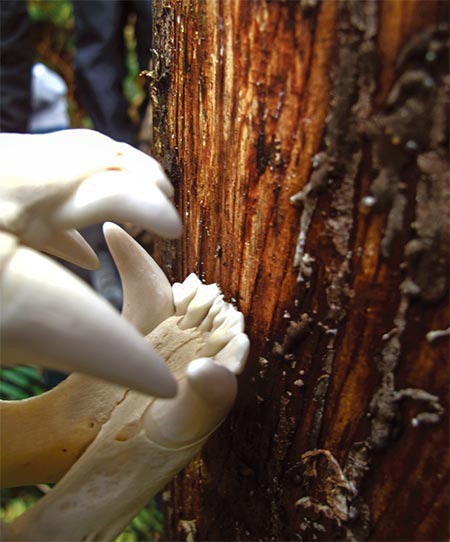
Nearly 40 years ago, I discovered some curious bear feeding sign on a mid-elevation ridgeline in northern Vermont. A pole-sized bigtooth aspen had been peeled to its roots like a banana. Strips of bark lay in tatters on the ground, and the exposed wood was scored with vertical groupings of parallel scrape marks caused by a black bear’s incisor teeth. Since then, I have observed this feeding behavior on balsam fir, young sugar maple, red pine, and red spruce.
Claw marks and bite wounds show how a bear tore into and grasped the bark in order to peel it. The pattern of incisor teeth marks all over the stem provides us more than a hint of the reason: when the sap of selected trees is available, bears peel them in order to consume the slimy cambium and secondary phloem tissues. In order to get at all the exposed vascular tissues’ nutrients, a bear will feed upon the entire trunk’s surface, from the root flare to as high as it can reach.
Cambium feeding is apparently a more frequent behavior in the Northwest and Rocky Mountains than in our Northeast. In the Cascades of Washington, bears may scar as many as 40 trees per day; such “peeling binges” get black bears in trouble with industrial forest owners. Native peoples, from British Columbia south to the Cascades and Rockies, also ate cambium from a number of tree species, scraping ribbons of pulpy cambium from the underside of peeled bark slabs. Ironically, scrapers were frequently made from the shoulder blades of black bears.


Discussion *